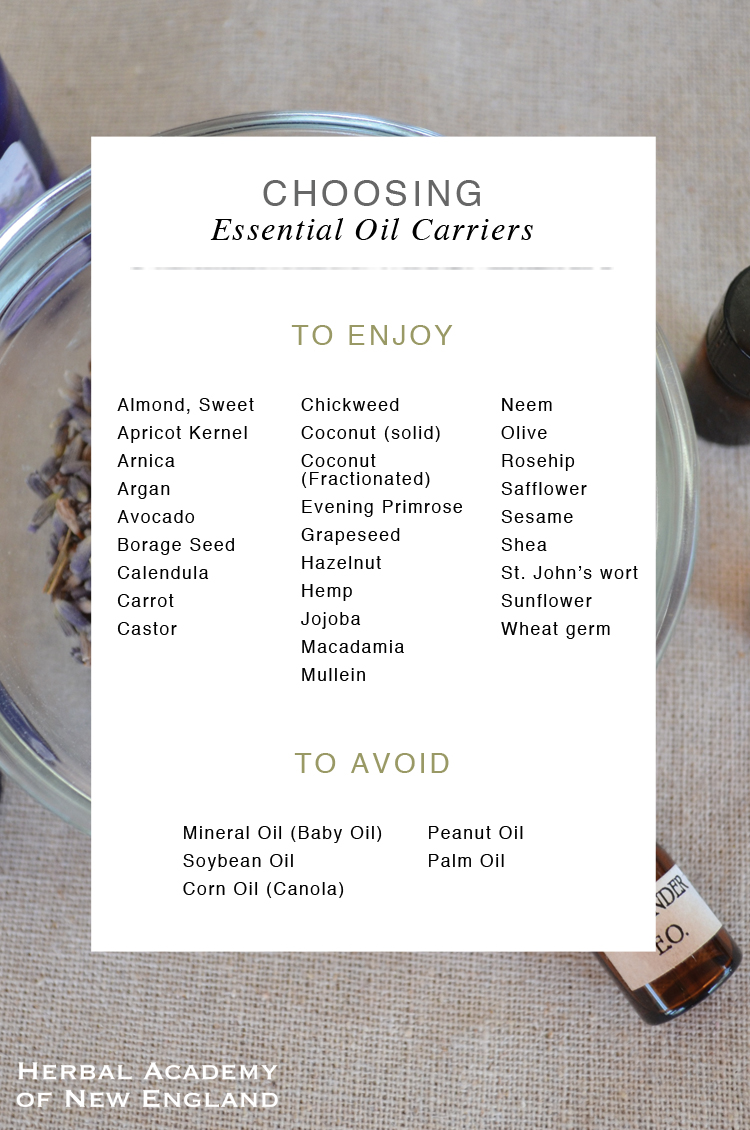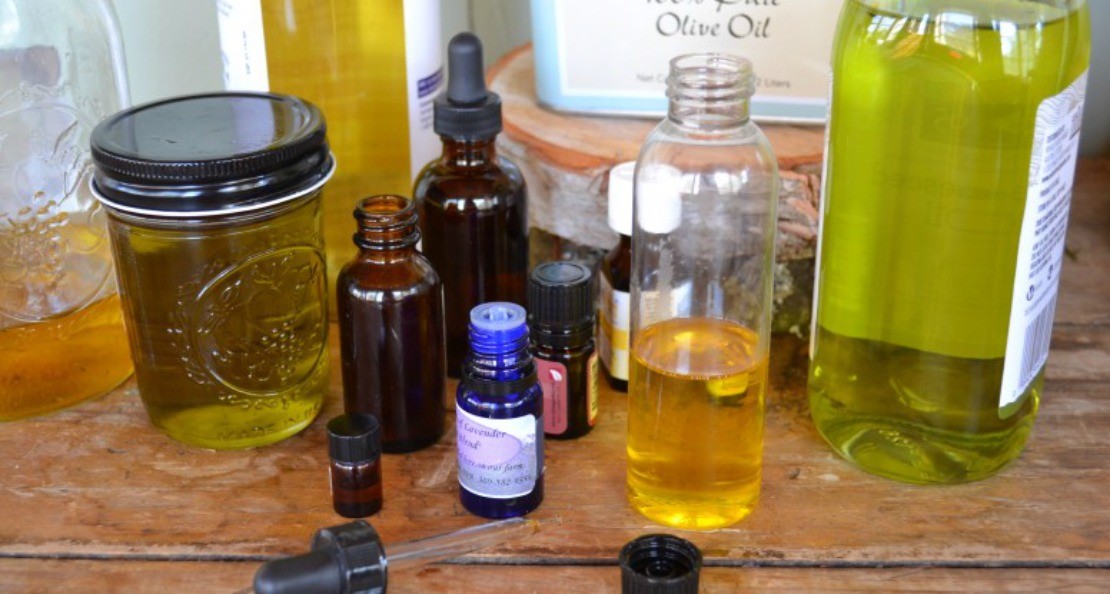
Choosing Essential Oil Carriers
This post is the fifth in a weekly, multi-part series on using essential oils. We started by discussing Basic Essential Oils for Daily Living, How to Choose High Quality Essential Oils, Essential Oil Safety, and Incorporating Essential Oils Into Your Herbal Practice, and continue here with a discussion on choosing essential oil carriers. Which carrier oils should you choose, and why? Which carrier oils should you avoid? We invite you to learn here how herbalists choose carrier oils and then join us weekly for additional articles on topics ranging from choosing carrier oils to essential oil sustainability considerations.
Why use Carriers in Aromatherapy?
When studying the art and science of aromatherapy, we quickly find out that there is much more to it than meets the…nose? Learning the essential oils themselves, with their actions, indications, and contraindications is only the first step in a beautiful and rewarding journey. In previous posts we have learned that in addition to essential oil safety, we must also think about essential oil quality and appropriate application methods.
When it comes to using essential oils, there are a variety of vehicles, or carriers, which can be used to accomplish their therapeutic task. External application of essential oils is achieved either through direct inhalation (diffusers, spritzers, or steams), secondary inhalation (for example as an adjunct benefit of external use or homemade cleaning products), or application to the skin. When utilizing essential oils through direct inhalation, there are only a few carrier options available: for example, placing a few drops on a handkerchief, using spritzers or essential oil diffusers, or using steam inhalation. Essential oil diffusers come in various forms, including ones that you can plug into a wall or into your car. They also come in the form of a dish and candle set-up. In both this latter example and with steam inhalation or spritzers, water is normally the carrier used to assist in the delivery of the essential oil to the respiratory system.
Where things become slightly more complicated (in a fun way) is in regards to applying essential oils to the skin. There are a variety of reasons one would use essential oils in this way, for example during aromatherapy massage for stress management, in ointments for painful swollen joints, or perhaps when trying to quell a bad case of dandruff. However, there are very few cases when applying essential oils to the skin undiluted is advisable, as many essential oils applied “neat” (meaning undiluted application to the skin) can be extremely irritating, caustic, or otherwise sensitizing. In most circumstances, essential oils need to be diluted before application.
In this post, we are going to learn about some of the many different carrier oils that can be used to dilute essential oils or essential oil blends prior to application to the skin. Just like essential oils themselves, different carriers have different properties and can be considered useful for a variety of diverse applications.
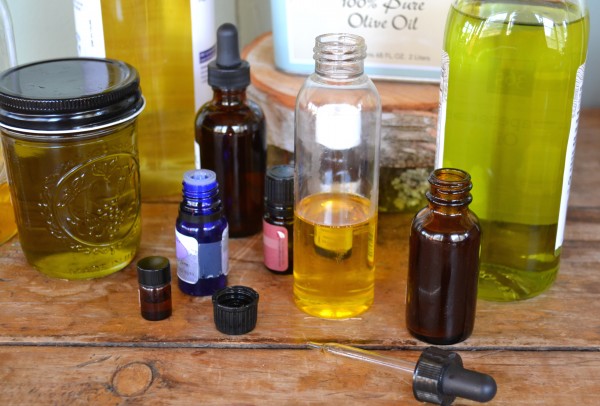
Essential Oil Carriers: Fixed Oils, Macerated Oils, and Fats
Vegetable oils are by far the most common types of carriers used in the external application of essential oils. In aromatherapy, vegetable oils (usually termed ‘fixed’ oils) are differentiated from ‘macerated’ or ‘infused’ oils and fats. ‘Fixed’ refers to an oil’s stable qualities, unlike those of essential oils which are volatile and lose their properties to evaporation. Fixed oils such as sesame or olive oil are liquid at room temperature. ‘Macerated’ or ‘infused’ oils are oil-based extracts of medicinal herbs and are made by infusing a medicinal herb like arnica or calendula into a fixed oil such as grapeseed or sweet almond (learn more about infused oils). In addition to its inherent physical properties, the macerated oil will also contain the oil-based medicinal properties of the herb. Fats such as shea or coconut, although similar in chemical structure to fixed oils, are heavier and more complex and tend to be solid at room temperature.
Sometimes it is useful to think about essential oil carriers in terms or being ‘basic’ or ‘specialized’. Basic oils tend to be more common, and for that reason are usually used as the main carriers for aromatherapy massage. They tend to be viscous, lighter in color, and odorless. Good examples of basic fixed oils are apricot kernel, sunflower, grapeseed, and sweet almond. Specialized oils tend to be heavier oils or oils that have more specialized properties. They also tend to be more expensive than basic oils, make up just a small portion of a massage blend, and are used at 100% concentration only in very specific applications. Good examples of specialized oils include neem, jojoba, avocado, argan, and hazelnut. Macerated oils and solid fats might also be placed under this category.
Not only do carrier oils act as lubricants during aromatherapy massage, they also are great diluting agents as essential oils are fat-soluble and easily disperse into carrier oils. They also have inherent physical properties depending upon the composition of their fatty acids. These properties not only dictate their longevity and usefulness in regards to different topical preparations, but also instill various benefits in regards to skin health and function. For example, there are three types of oils/fats which have their own characteristic properties: saturated, monounsaturated, and polyunsaturated. Saturated oils (like coconut oil), are solid at room temperature and are often employed in making ointments and creams. Monounsaturated and polyunsaturated oils (the source of essential fatty acids) are liquid at room temperature. It is important to note that unsaturated oils are less stable than saturated oils and as a result are more likely to turn rancid, or oxidize.
Oxidation also happens naturally over time or when monounsaturated and polyunsaturated oils are heated. In this regard, different oils will have different shelf-lives and storage needs. In addition, it is important to remember when you are shopping around for different carrier oils that good quality carrier oils will be cold-pressed (extracted without using heat or chemicals) as well as completely free of additives, preservatives, colorings, or flavorings. The exception here is with macerated oils, where heat may have been a necessary part of the infusion process and where the oil-based herbal extracts would be considered additives. Heat is also used to produce coconut oil and grapeseed oil. Also, don’t forget that some high quality cold-pressed oils will have a natural fragrance, for example shea, olive, argan, hazelnut, or neem. You should be suspicious if you purchase a carrier oil that is meant to have a natural color or fragrance and it doesn’t. Sometimes manufacturers use bleaches and deodorizing chemicals, particularly with many brands of shea butter.
Good and Bad Carrier Oils
So which essential oil carriers are good to use? Are there any that should be avoided? It is important to note that there are certain oils available whose use in aromatherapy is definitely discouraged. This is for a variety of reasons which are briefly explained in the table below.
Carrier Oils to Avoid |
|
| Oil Name | Reason for Avoiding |
| Mineral Oil (Baby Oil) | Petrochemical based. Not considered a natural product by holistic practitioners. Creates barrier on the skin which prevents absorption of essential oils. |
| Soybean Oil | Likely from a GMO source. Obtained by solvent extraction as beans have a low oil content. Prone to oxidation. Can be a sensitizer for some individuals. |
| Corn Oil |
Likely from a GMO source. Produced by heat extraction. Not necessarily harmful and can be soothing to most skin even at 100% concentration, but best avoided unless really in a pinch. |
| Peanut Oil | Likely from a GMO source. Some brands are produced using solvent extraction. Can be a sensitizer for some individuals. |
| Palm Oil | The palm oil industry has been linked to major environmental degradation including deforestation and habitat destruction, animal cruelty, and indigenous rights abuses in countries where it is produced. |
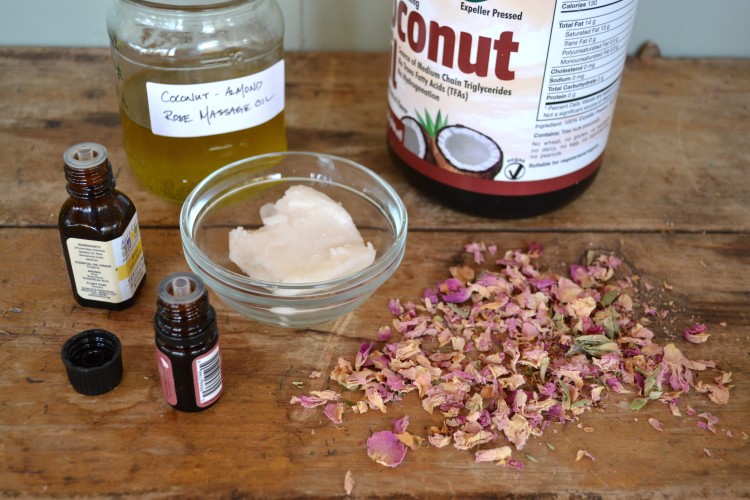
Carrier Oils to Enjoy |
||||
| Oil name | Obtained from | Fixed (FX)/Infused (IN)/Fat (FT) | Basic (B) or Specialized (S)% used in blend | Properties/Uses |
| Almond, Sweet | Kernel of Prunus dulcis | FX | B (100%) | High in vitamin E and other fat-soluble vitamins. A light oil, protective and nourishing without being too greasy. Good for all skin types, including baby care. |
| Apricot Kernel | Kernel of fruit from Prunus armeniaca | FX | B (100%) | Similar feel and use as almond oil, slightly more expensive. Light, non-greasy. Good for all skin types, especially prematurely aged, dry, and or inflamed skin. Astringent and toning. |
| Arnica | Infused with flowers of Arnica montana or other Arnica spp. | IN | S (up to 20%) | Mainly used as a counter-irritant to increase circulation to a localized area. Helpful in cases of bruising, inflamed and painful joints, and sore muscles. Avoid use on broken skin. |
| Argan | Kernel of fruit from Argania spinosa | FX | S (up to 100%) | Very high in vitamin E. Traditionally used by Moroccan women for its rejuvenative, protective, and nourishing effects on the skin. Thought to prevent wrinkles and signs of aging. Toning and slightly astringent, useful for acne. Increases oxygenation to the skin cells. Good for rashes, infections, and bug bites. Also used for hair and scalp conditioning. |
| Avocado | Dried flesh of the avocado pear Persea Americana | FX | S (up to 25%) | Fortifying and regenerating. One of the heavier fixed oils, but more readily absorbed than olive oil. Indicated for extremely dry, cracked skin, dehydrated skin, wrinkles, and premature aging caused by sun damage. High levels of vitamin E. Also used for hair and scalp conditioning. |
| Borage Seed | Seeds of Borago officinalis | FX | S (up to 20%) | High in gamma linolenic acid, vitamins, and minerals. Anti-inflammatory and useful in cases of eczema and psoriasis. Good for regenerating and stimulating skin repair. |
| Calendula | Infused with flowers of Calendula officinalis | IN | S (up to 100%) | A very versatile infused oil. Anti-inflammatory, astringent, and healing. Effective on wounds, rashes, abrasions, eczema, psoriasis, fungal infections and acne. Its effects are thought to be enhanced by the addition of other base oils. |
| Carrot | Infused with root of Daucus carota | IN | S (up to 10%) | Not to be confused with the essential oil Daucus carota, which is distilled from the seed. High in beta-carotene. Rejuvenative, anti-inflammatory, anti-mutagenic, anti-aging. Assists in repair of damaged skin. Useful for sun-damaged skin and scar tissue. |
| Castor | Seeds of the castor oil plant Ricinus communis | FT | S (10%) | Some contraindications to its use including pregnancy. Anti-inflammatory and anti-oxidant. Specific external use for gastrointestinal cramping, constipation, and heavy congested painful periods. Also used for ringworm and for external relief of arthritis. |
| Chickweed | Infused with aerial parts of Stellaria media | IN | S (up to 20%) | Used for hot, inflamed skin and joint conditions. Generally considered quite cooling. Toning astringent useful in roseola, diaper rash, cradle cap, and childhood eczema. |
| Coconut (solid) | Pressed from flesh of coconut | FT | B (100%) | Solid at room temperature. Highly useful when making creams, lotions, and ointments. Used as a sun filter in many tanning products. Can be very greasy, but very moisturizing to skin and hair. Good for all types of inflammatory skin conditions, including acne and eczema, as well as overly dehydrated or prematurely aged skin. Also used for hair and scalp conditioning. |
| Coconut (Fractionated) | From coconut oil, long-chain triglycerides removed. | FX | B (100%) | Liquid form. Increased antioxidant and disinfectant properties due to higher levels of capric acid and caprylic acid. Widely used in the preparation of soaps, lotions, and cosmetics. Also used for hair and scalp conditioning. |
| Evening Primrose | Seeds of the evening primrose plant Oenothera biennis | FX | S (up to 20%) | Famous for its high GLA content. Specific for inflammatory conditions of the skin (eczema and psoriasis). Helps to prevent aging of the skin. Very effective in combination with borage seed oil. Great added to shampoos and conditions for dry scaling scalp and dandruff. |
| Grapeseed | Hot extraction from seeds of Vitis vinfera | FX | B (up to 100%) | Produced by hot extraction, so not necessarily as high-quality as others listed. Benefits are its astringent, toning, and emollient nature and non-greasy feel. It has good extractive properties, making it useful for infused/macerated oils. |
| Hazelnut | Kernel of Corylus avellana | FX | S (up to 100%) | Considered very nurturing to troubled skin. Light and fast-penetrating oil said to be able to pass through top layer of skin. Specific for oily or combination skins affected by acne as it is considered both astringent and regularizing to sebaceous function. Best used alone as a base for skin disorders of this kind. Acts as a weak filter for damaging sun rays. |
| Hemp | Pressed seeds of Cannabis sativa | FX | S or B (up to 100%) | One of the more heavy oils, but generally considered a non-clogging oil that helps to reduce the size of pores, clear blackheads and acne, and protect the skin from free radicals. It is anti-inflammatory and helps reduce redness in inflammatory skin conditions like psoriasis and eczema. Considered toning and astringent. Also used for hair and scalp conditioning. |
| Jojoba | Bean of Simmondsia chinensis | FX | S (up to 100%) | More of a liquid wax than an oil. Famous for its resemblance to sebum and specifically indicated in acne due to its regulating effects. Highly penetrative like hazelnut. Also useful anti-inflammatory conditions and sunburn. Thought to generally aid in skin elasticity. |
| Macadamia | from the nut meat of the macadamia tree Macadamia integrifolia | FX | S (up to 100%) | Good for dry and wrinkled skin. Contains palmitoleic acid (a monounsaturated acid) that is also found in sebum. Beautiful, non-greasy texture. Exceptionally penetrating. Thought to aid local circulation and lymphatic flow. |
| Mullein | Infused with the flowers of Verbascum thapsus | IN | S (up to 20%) | Antiseptic, anti-congestive, astringent, mucolytic. Generally softening to hard deposits in the ear canal, for which it is specific. Relieves ear pain and ear infections (in combination with other measures). Also useful for hemorrhoids, wound-healing, nerve pain, and chilblains. |
| Neem | Pressed from nuts of Azadirachta indica | FX / FT | S (up to 10%) | Solid to almost solid at room temperature, often sold slightly diluted. Used in creams, lotions, and dental products as an anti-infective. Antifungal. It is also used to deter mosquitoes, fleas, flies, ticks, and mites. Used in the treatment of lice. Very strong scented. |
| Olive | Pressed from the fruit of Olea europaea | FX | B (100%) | One of the most common and easy-to-find carrier oils. Heavy and greasier when used alone. High in fat-soluble vitamins, helps in the repair and rejuvenation of damaged, dry skin. Soothing to inflammatory skin conditions. Slightly antifungal and useful in cradle cap. Also used for hair and scalp conditioning. |
| Rosehip | Seeds of the fruit of Rosa canina and other Rosa spp. usually by solvent extraction | FX | S (10%) | A very expensive fixed oil with glorious anti-aging properties. Very high levels of vitamin C and other free-radical scavengers. Specific for reducing scar tissue and damaged caused to skin from sun exposure. Tissue regenerator. |
| Safflower | Pressed from seed of Carthamus tinctorius | FX | B (up to 100%) | Very high levels of polyunsaturated fats (90%) and therefore less stable than other carrier oils. Used on inflamed joints and sprains. |
| Sesame | Pressed from the seeds of Sesamum indicum | FX | S (up to 25%) | Not the toasted variety. Used in Ayurveda as daily all-over body massage oil to reduce Vata. Also used for inflamed and sprained joints. Nourishing for dry skin, dehydrated skin. Also used in sun preparations and to help repair sun-damaged skin. |
| Shea | extracted from the nut of the African shea tree Vitellaria paradoxa | FT | B (up to 100%) | Most commonly used like coconut oil in making of creams, lotions, and ointments. Traditionally used to protect the skin from the sun (SPF 6) and repair damaged skin. Also used for scalp and hair conditioning. Often sold having been bleached and deodorized. |
| St. John’s wort | Infused with leaves and flowers from Hypericum perforatum | IN | S (up to 100%) | Specifically used for the relief of pain and inflammation associated with nerve damage and irritation, i.e. neuralgia, sciatica and for wounds where there has been nerve damage. Considered vulnerary, analgesic, anti-inflammatory. Useful for hemorrhoids, sunburn, inflamed joints. Often combined with calendula as they are believed to complement each other’s therapeutic qualities. |
| Sunflower | Pressed from the seeds of Helianthus annus | FX | B (100%) | Very common and easily obtainable with light texture and non-greasy feel. Reliable oil that can be used on a variety of skin types. Great base oil for any mix or preparation. |
| Wheat germ | Extracted from the outer grain of Triticum vulgare | FX | S (up to 10%) | Very high in vitamin E and often used in blends and products to increase their shelf-life. Specific for scar tissue and stretch marks. Increases elasticity of skin. Beneficial for tired muscles. May cause reaction with individual’s with Celiac disease. |
Other Carrier Options
On occasion, there may be circumstances where using vegetable oil carriers may be inappropriate, messy, or otherwise not ideal. The following are options that one could consider instead of or in combination with vegetable carrier oils. The benefits of some of these options is that they can increase the versatility of essential oils use, increase therapeutic activity, and add to a whole bunch of fun experimentation and product making.
Water and water-based carriers
Water can be an excellent carrier for essential oils, however, it is very important to remember that water and oil don’t mix. What this means is if you decide to use water as a carrier, the essential oils in your mixture will not be adequately dispersed and can end up on the skin undiluted. This can lead to skin reactions and burns (I’m remembering the bathtub burn that I once got from undiluted essential oils floating on the surface of the water…ouch).
However, this doesn’t mean you can’t use water as a carrier or enjoy a lovely bath with essential oils. For example, if you were interested in making a facial toner or spritzer with water and essential oils, you can add the oils to the distilled water and use dispersing agents like alcohol (although this is very drying to skin), Aloe vera juice or products like Solubol which contain lecithin and other natural emulsifiers. For baths and soaks, you can always dilute the essential oil blend with a carrier oil prior to adding it to the water.
A few other ‘water-based’ carriers that are also often used due to their beneficial effects on the skin include apple cider vinegar, distilled witch hazel, and hydrosols. Apple cider vinegar itself needs to be diluted before applying it to the face as it is very acidic and drying and can lead to irritation. However, there are cases when using undiluted apple cider vinegar can be of therapeutic value, for example when attempting to draw heat out of internal organs or structures. In any case, essential oils will not diffuse well into these water-based mediums and the same considerations apply as for water alone.
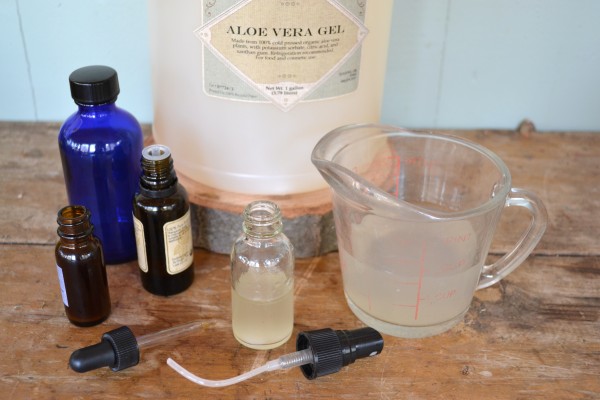
Aloe vera gel and juice
Aloe vera gel is an incredibly versatile and healing carrier (read more uses for aloe vera). Used alone or in conjunction with other carriers like creams and lotions, aloe vera gel is a soothing, cooling, and toning agent which is effective for soothing first-degree burns, abrasions, scars, and staph infections of the skin including acne and boils. Aloe vera gel is generally used in a localized fashion in spot treatment, as it can create a tacky sensation on the skin which is unappealing to some people. It should never be applied to more serious burns or deeply infected wounds as unproportioned quantities can trap in the heat or the infection. Aloe vera juice carries similar properties to the gel, but is less congealed and more useful as a carrier when adding essential oils to creams, lotions, or baths. For both the juice and the gel, use the same dilution ratios as you would for carrier oils.
A quick note of caution when purchasing aloe vera gel or juice: make sure your product is pure, free from fragrances and artificial colors. Many aloe vera gels are made of many different substances that appear gel like, even though the percentage of actual Aloe vera is very low. The same goes for the juice. Although often sold for internal use, and generally free of artificial additives, it is not uncommon to find aloe vera juice mixed with other herbal extracts or artificial preservatives. When choosing aloe vera, as well as carrier oils, be sure to read the labels.
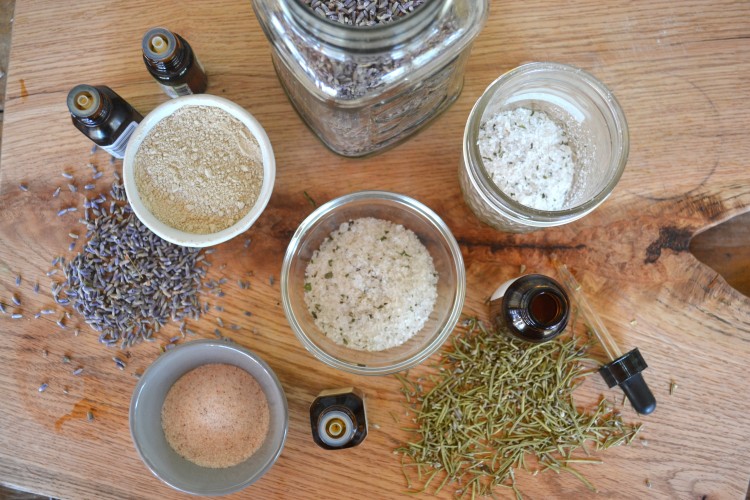
Salt, Sugar, and Clays
Salt, sugar, and clays are great partial carriers for essential oils when making body scrubs, soaks, and therapeutic masks and plasters. However, because oils do not chemically dissolve in salt or sugar and only slightly disperse in clay, you will need to also use a carrier oil or a dispersing agent like honey or aloe vera gel. Not only will this prevent sensitization of the skin, but can also impart further therapeutic properties to your preparations and make them easier to use.
Liquid soaps and base shampoos and conditioners
There are many base products available that you can add essential oils to. Liquid castile soaps and base shampoos and conditioners can serve as beautiful and convenient carriers and create a highly therapeutic method of applying essential oils. The same dilution ratios are used in liquid soaps, shampoos, and conditioners as for carrier oils or aloe vera. In a bind, essential oils can always be added to whatever liquid soap, shampoo or conditioner you have on hand. However, this is not advised as there can be chemical interference and loss of therapeutic value when essential oils are mixed with other fragrances and agents found in these regular products.
It is important to remember that when using essential oils in this fashion, especially on the scalp, there is a possibility of increased absorption of essential oils through the hair follicles. This means that more essential oil molecules might eventually reach the blood stream in comparison to other topical applications.
Fun, Experimentation, and Safety
There is a lot to learn about essential oils, their therapeutic value, methods of application, and carriers that can be used to apply them externally. With all this learning, safety must come first. However, it is important to remember that using essential oils is as much of an art form as it is a science, and there are many ways to make your aromatherapy experience uniquely therapeutic and satisfying.
There are some basic themes to remember when choosing essential oil carriers. First, is the carrier water or oil based? If water based, something must be used to disperse the essential oils lest they come in contact with the skin undiluted. Second, when choosing a carrier, always ensure that you are using a natural product free of synthetic fragrances, fixatives, or emulsifiers, or that the products have not been altered from their natural state using bleaches or chemical deodorizers. All this takes is a little awareness and label reading before your purchase. Thirdly, there are different reasons you would choose different carriers or even carrier oils. Be dynamic in your reasoning process and research and explore your options so that you can use the most appropriate carrier for the product or situation you are faced with. Lastly, have fun, get creative, and enjoy this new found freedom of self-care.
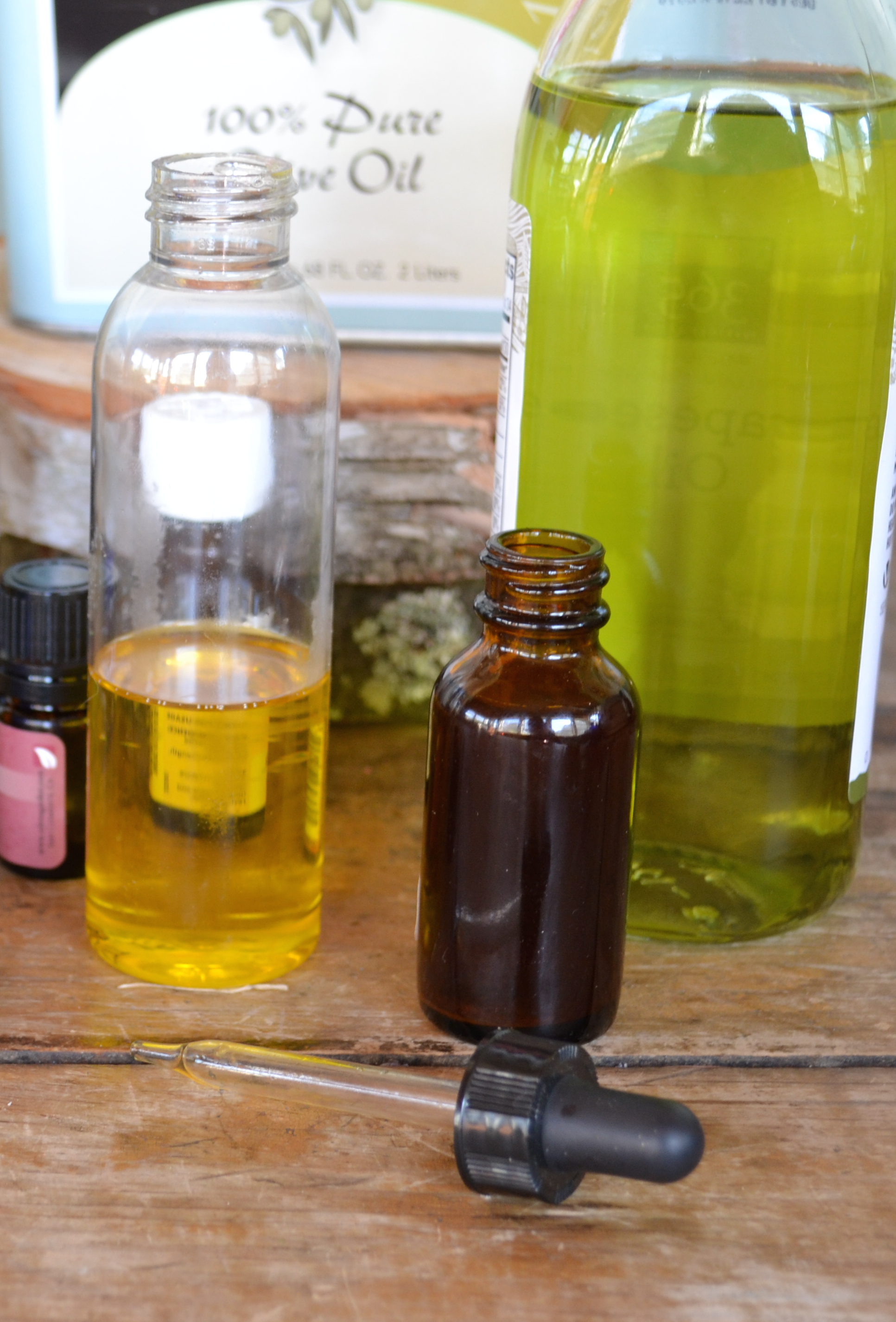
REFERENCES
Buckle, J. (2003). Clinical Aromatherapy (2nd ed.). Philadelphia, PA: Churchill Livingstone.
de Bonneral, P. and Skipper, C. (2013). Aromatic Medicine: Integrating Essential Oils into Herbal Practice (Vol. 1). France: École Lyonnaise De Plantes Médicinales.
Davis, P. (2002). Astrological Aromatherapy. London: UK: C.W. Daniel Company Limited.
Heath, M. (2004). Magical Oils by Moonlight. Pompton Plains, NJ: The Career Press.
Lawless, J. (1995). The Illustrated Encyclopedia of Essential Oils. New York, NY: Barnes and Noble.
Mojay, G. (1997). Aromatherapy for Healing the Spirit. London, UK: Healing Arts Press.
Price, S. and Price, L. (2002). Aromatherapy for Health Professionals (2nd ed.). New York, NY: Churchill Livingstone.
Rich, P. (1996). Practical Aromatherapy. London, UK: Parragon
Sellar, W. (2001). The Directory of Essential Oils. London, UK: C.W. Daniel Company Limited.
Tisserand, R., and Balacs, T. (2004). Essential Oil Safety. London, UK: Churchill Livingstone.
Tisserand, R. (2013). Essential Oil Safety (2nd ed.). New York: Elsevier Health Sciences.
Worwood, V.A. (1990). The Fragrant Pharmacy. London: Bantam Books.

